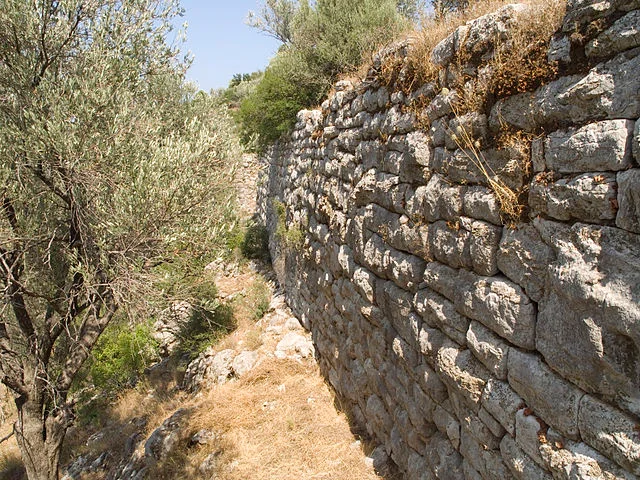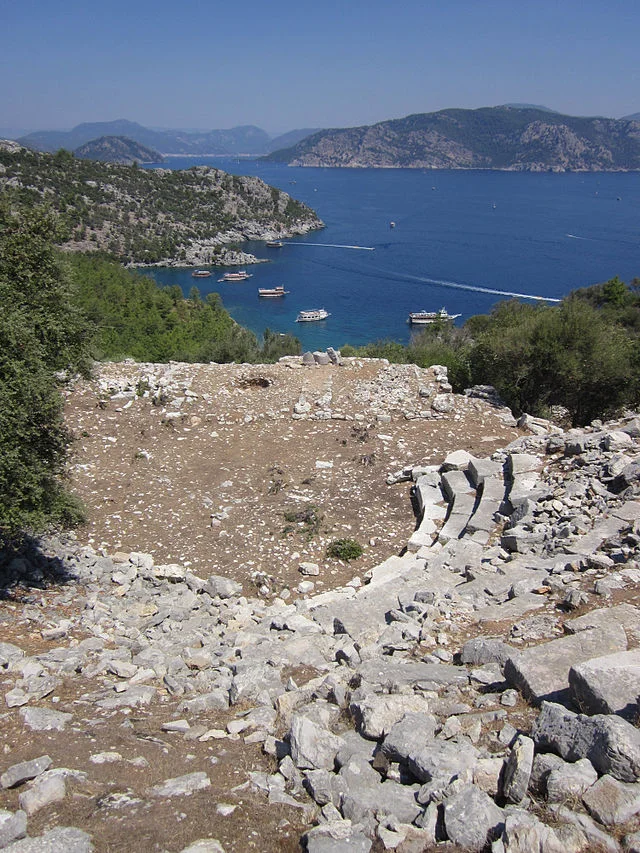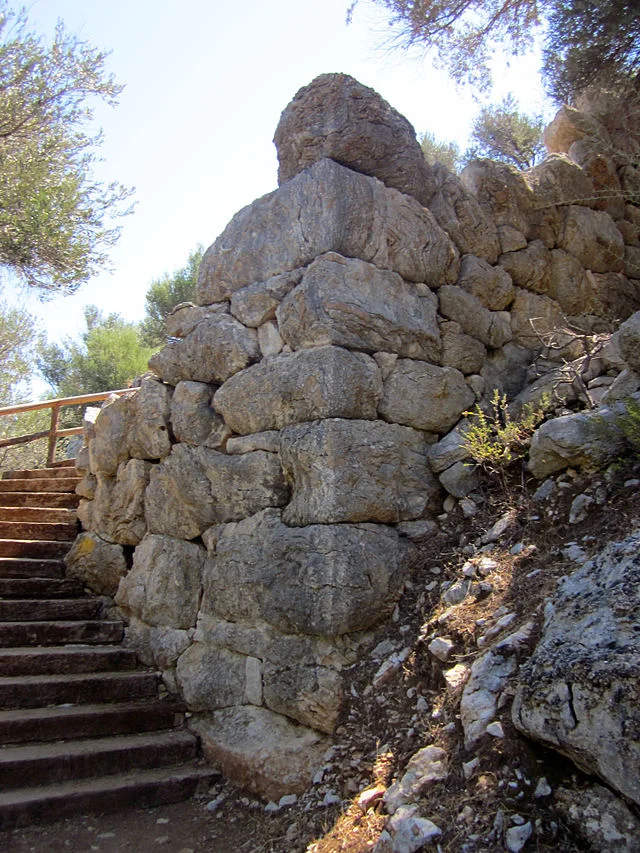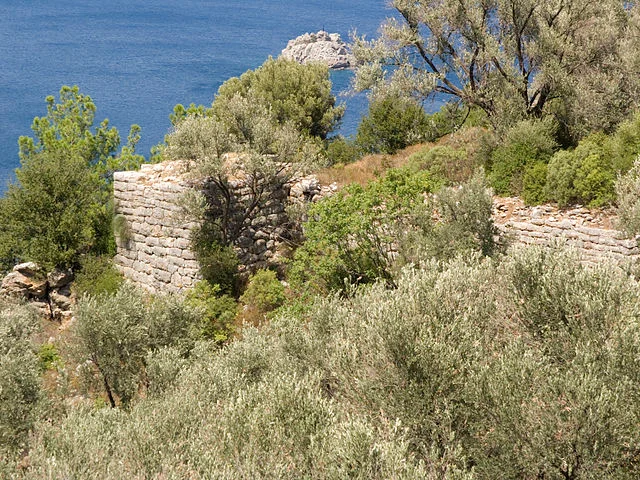The ancient city of Amos, located near the modern Turkish town of Turunç, provides a valuable window into the history and culture of the Hellenistic period in southwestern Asia Minor. Known for its well-preserved ruins, Amos stands on a hilltop overlooking the Aegean Sea, offering insight into the region’s strategic and economic importance in antiquity. In this post, we will explore Amos’s origins, its historical significance, key archaeological features, and its decline.
Get your dose of History via Email
Origins and Historical Background

Amos’s history begins during the Hellenistic period, with its origins dating back to the early 3rd century BC. Scholars believe the city was part of the Rhodian Peraia, a network of settlements under the influence of the island of Rhodes. Rhodes established control over Amos and other cities in the region, using them as extensions of its economic and cultural influence.
The city’s Greek name, “Ἄμος” (Amos), is likely derived from a local or regional root word. Amos, along with other settlements on the Carian coast, served as both a military outpost and a trading center, connecting Asia Minor with the Aegean islands and mainland Greece.
Strategic and Economic Significance

Amos held strategic importance for Rhodes, especially during the Hellenistic era. By controlling Amos, Rhodes strengthened its influence over maritime trade routes. The city’s position allowed for effective surveillance of the coast, ensuring that Rhodes could monitor and control shipping in the region.
Trade and commerce likely formed the economic foundation of Amos. Its strategic location attracted merchants and travelers, boosting its prosperity. The city produced goods such as pottery, wine, and olive oil, and exchanged them with neighboring communities and overseas partners.
Key Archaeological Features

Archaeologists have identified several significant features in Amos, including a theater, a well-preserved city wall, and a series of temples and inscriptions. These structures shed light on the city’s layout, social organization, and religious practices.
The Theater
The theater in Amos is one of its most prominent landmarks. Positioned on a hillside with a view of the sea, the theater provided a venue for public gatherings, performances, and possibly even political meetings. The semi-circular structure, typical of Hellenistic theaters, features stone seating tiers that could accommodate hundreds of spectators. The seating area, or cavea, aligns with the natural slope of the hill, optimizing acoustics and visibility.
City Walls
The city walls, dated to the Hellenistic period, reflect Amos’s defensive concerns. Built with finely cut limestone blocks, these walls encircle the settlement, emphasizing the need to protect its inhabitants from potential invasions. Archaeologists have identified gates and towers within the walls, highlighting the strategic design employed in the city’s defense.
Temples and Inscriptions
Amos likely housed temples dedicated to the Greek gods, particularly Apollo, who was worshiped in Rhodes and surrounding regions. Inscriptions found within the ruins reference religious dedications, political decisions, and legal matters, providing a glimpse into Amos’s civic life. These inscriptions also offer evidence of the city’s administrative ties to Rhodes and its integration into the larger political and religious sphere of the Hellenistic world.
Decline and Later History
Amos’s prosperity began to decline after the 1st century AD, as Rhodes itself experienced economic and political difficulties under Roman control. The city likely suffered from the region’s changing trade patterns and the centralization of power in larger cities. While some habitation continued through the Roman and Byzantine periods, Amos gradually lost its prominence. By the Middle Ages, the city was abandoned, leaving only its ruins as evidence of its past significance.
Archaeological Discoveries and Modern Research
Modern archaeological efforts in Amos began in the 19th century, with European explorers documenting the site. In the 20th century, more systematic excavations uncovered additional details about the city’s layout, structure, and artifacts. These findings have contributed to a deeper understanding of life in Amos and its role in the region’s history.
Archaeologists continue to study Amos, aiming to uncover more about its origins, daily life, and interactions with neighboring cities. The preservation of the site remains a priority, as it offers valuable insights into Hellenistic urban planning, architecture, and culture.
Conclusion
The ancient city of Amos serves as an important historical and archaeological site. Its ruins reveal a once-thriving community tied closely to Rhodes and the broader Hellenistic world. Amos’s strategic position along trade routes, its theater, defensive walls, and inscriptions all contribute to our understanding of life in Asia Minor during the Hellenistic and Roman periods. Today, the ruins of Amos allow researchers and visitors to glimpse the past, preserving the city’s legacy as a key settlement in ancient Caria.
Source:

